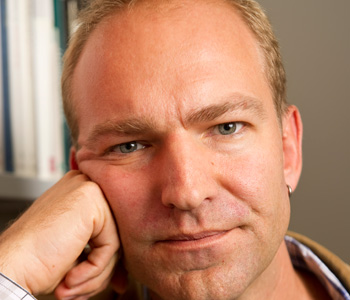Dan Rodgers
Age of Fracture
Belknap Press of Harvard
University Press
360 pages, 6 1/4 x 9 1/4 inches
ISBN 978 0674057449
Age of Fracture is a book about the ideas and arguments that now shape our times. It is about the ways in which conceptions of society and selves that were a commonplace in the middle years of the twentieth century broke into bits and fragments. It is about how we got the tools for thinking about society that we have now, and what it means to live with them.
I mean Age of Fracture in part as a guide to those perplexed by the debates of modern times. Across a broad terrain of concepts—markets, society, power, identity, gender, race, and time—I have tried to track the ways in which ideas and arguments that were common a generation ago were repudiated and remade. Keynesian ideas of the macroeconomy were elbowed out in the 1970s by ideas of flexible, self-correcting markets. Postmodernism swept through the English departments. Libertarian ideas penetrated both liberal and conservative circles. Identities multiplied. Ideas of social obligation shrank into smaller circles. Equality disappeared as an aspiration. Talk of cultural consensus gave way to slogans of a “culture war.”
Age of Fracture focuses on the last quarter of the twentieth century, from the mid 1970s, when the great post-World War II economic boom began to falter, to the terrorist attacks of 2001. An age of greed, many of its critics called it. But it was also a time awash in books and arguments. The academic disciplines were turned inside out. Think tanks treated ideas with the seriousness of loaded weapons. Age of Fracture is in part a guide to the era’s wars of ideas: to its most visible intellectual partisans, from Michel Foucault and Jeffrey Sachs to Charles Murray and Judith Butler, and, still more, to the arguments that spilled out across society, culture, and politics.
But Age of Fracture is not only a guide—it is also an argument.
As the last quarter of the twentieth century began, it was the sign of an up-to-date mind to know that society exerted immense pressures on human individuals, that history and institutions mattered, that the lives even of strangers were braided together by thick webs of interdependence. By the end of the century, most of this was gone. It was the sign of an up-to-date mind to know that selves and identities were malleable, that society and history could be transcended, that flexible markets ruled the world. Choice, agency, performance, and desire were the new keywords. Micro categories supplanted macro ones. These were not mere abstractions in the mind. Every bit of social policy showed the effects of the fracturing of social thought: from debates over school choice and safety nets for the poor to arguments over affirmative action and the war on terror.

The nation was not becoming, in any straightforward way, more conservative. It was becoming something unprecedented. It was thinking in smaller, more individualist pieces than at any earlier time in its modern history. It was trying to get through the extraordinary hazards of the late twentieth century with fragments.
Age of Fracture began in my attempts to explain modern America to myself and to my students. Having made a pledge that I would take my courses right up to the present moment, I spent much of this era trying to figure out what was happening as the world shifted beneath us.
Conservative writers rejoiced that the nation was finally coming to its senses after the cultural upheavals of the 1960s. Liberals protested that the new-right think tanks were simply putting into circulation the best pseudo-ideas their money could by. Neither explanation worked for me. Both liberalism and conservatism were transformed in these years, and there were sometimes uncanny resemblances and crossovers in their remaking.
The nation was not becoming, in any straightforward way, more conservative. It was becoming something unprecedented. It was thinking in smaller, more individualist pieces than at any earlier time in its modern history. It was trying to get through the extraordinary hazards of the late twentieth century with fragments.
There were fractures on the ground of society and politics, too. The polarization of the media as the Walter Cronkite generation of news broadcaster passed from the scene was a striking fact of the age. With the breakup of network television into wired-in, micro-communities of like-minded others, arguments became more shrill and polarized. Secession is in the air once again. Communities have walls, gates, and security guards. But this is not as unusual in American history as it appears. Social and political polarization has been a fact of much of our past. It is not to be dismissed. What is new is the very fracturing of the words and categories by which we try to grasp social reality.
Each chapter of Age of Fracture brings its readers into a different facet of the age’s great debates.
The opening chapter shows how the social vocabulary of the Cold War slipped out of Ronald Reagan’s speeches. Sacrifice disappeared, struggle was minimized, and his very images of the nation disaggregated into stories and individual cameos.
Other chapters tell how Keynesian macroeconomics, which still dominated economic thought and policy when the age began, broke up unexpectedly into smaller, microeconomic models during the economic uncertainties of the 1970s, and how those new models of human behavior raced through the social sciences. Structures moved out of the center of the vocabulary; ideas of power thinned out. The world was flat, a spate of best-selling books asserted; the economic hierarchies of the past were being eclipsed by new democracies of market choice.
Identities fractured in a different way. But they, too, broke up into smaller, more fluid categories. Nothing seemed deeper or more essential when the period began than the structures of race and gender. Race could be mapped in a book like Alex Haley’s Roots as a continuous tale of memory and collective experience. Sisterhood, too, was real: its consciousness was just beginning to be tapped in the new feminist movement. But under pressure from within, the categories began to crack. Identities were patchworks, progressive theorists began to write. They were multiple, messy, and often contradictory.
In conservative circles, too, the politics of identity seethed with anxiety and anger. “Color blind” conservatives rushed into the fray to declare the illusory nature of race. Gender conservatives insisted on the essential stability of men’s and women’s nature. The “culture wars” which erupted in the 1980s sprang in part out a dramatic reconstitution of the organizational landscape of religion, as Protestants spilled out of older denominations and into new churches. But the “culture wars” were also, and even more dramatically, battles on the terrain of certainty, sex, and gender.
The last chapters of Age of Fracture turn from the fields of culture to show how the breakup of ideas of power, structure, and society transformed the era’s battles over society and politics. As ideas of collective identity and responsibility shrank, obligations to the poor unraveled. Rights talk spread to new groups and shifted ground. Agreement on the public character of public schools came apart. Demands for equality had once dominated the civil rights movement; now it was more often said that the true measure of justice was choice.
As social thought fragmented into smaller, disaggregated pieces, even history came to be seen as fluid and almost infinitely malleable. Constitutional lawyers dreamed of short-circuiting time to discover the Constitution’s “original intent”; economists rushed into Eastern Europe with dreams of shocking the Communist society, overnight, into capitalism.

Secession is in the air once again. Communities have walls, gates, and security guards. But this is not as unusual in American history as it appears. What is new is the very fracturing of the words and categories by which we try to grasp social reality.
Many readers of Age of Fracture will have a hard time setting aside the nightly news images of the polarized and fractious politics that suddenly erupted during the election of 2010. The massive “yes we can” gatherings of 2008 were gone; a defensive desire to protect one’s own from the grasp of some distant “they” had risen into ascendance.
The Tea Party is a brand new political form—a compound of grassroots anger, politicized television, and cannily deployed wealth—which carries a very old anti-government message. It is a creature of the economic turmoil which gave it birth.
Still, the ability of the Tea Party’s libertarian fervor to carry traction in a moment of economic crisis should catch us by surprise. Franklin Roosevelt responded to a much deeper crisis during the Great Depression of the 1930s by preaching the interdependence of every individual’s economic fate on everyone else’s.
Those sentiments endure. Social thought is never one-dimensional, never without its dissent and possibilities for change. But dominant ideas matter. The shrinking of collective responsibilities and unhinging of collective purposes that the age of fracture accomplished is both the ground on which Tea Party libertarianism organizes and the loudest of its messages.
Age of Fracture is a history of our time, not a prescription for the future.
I did not write this book out of nostalgia for mid-twentieth century social thought, with its heavy Cold War overlay and its stress on social conformity. Much of that is gone and with good riddance. When concepts of structure grow too strong, they tyrannize over individual imaginations. When they grow too weak, they lose any serious relationship to the real worlds of power and institutions.
I wrote this book not with nostalgia but hope: that in looking back on the ways in which one powerful set of assumptions gave way and was replaced by another—by looking hard at the dynamics, accidents, polemics, simplifications, and acts of imagination that shaped the social thinking of our times—we might find a better balance for the future.




We don't put paywalls. We don't distract you with ads. We don't sell your data.
Please help to keep this running!